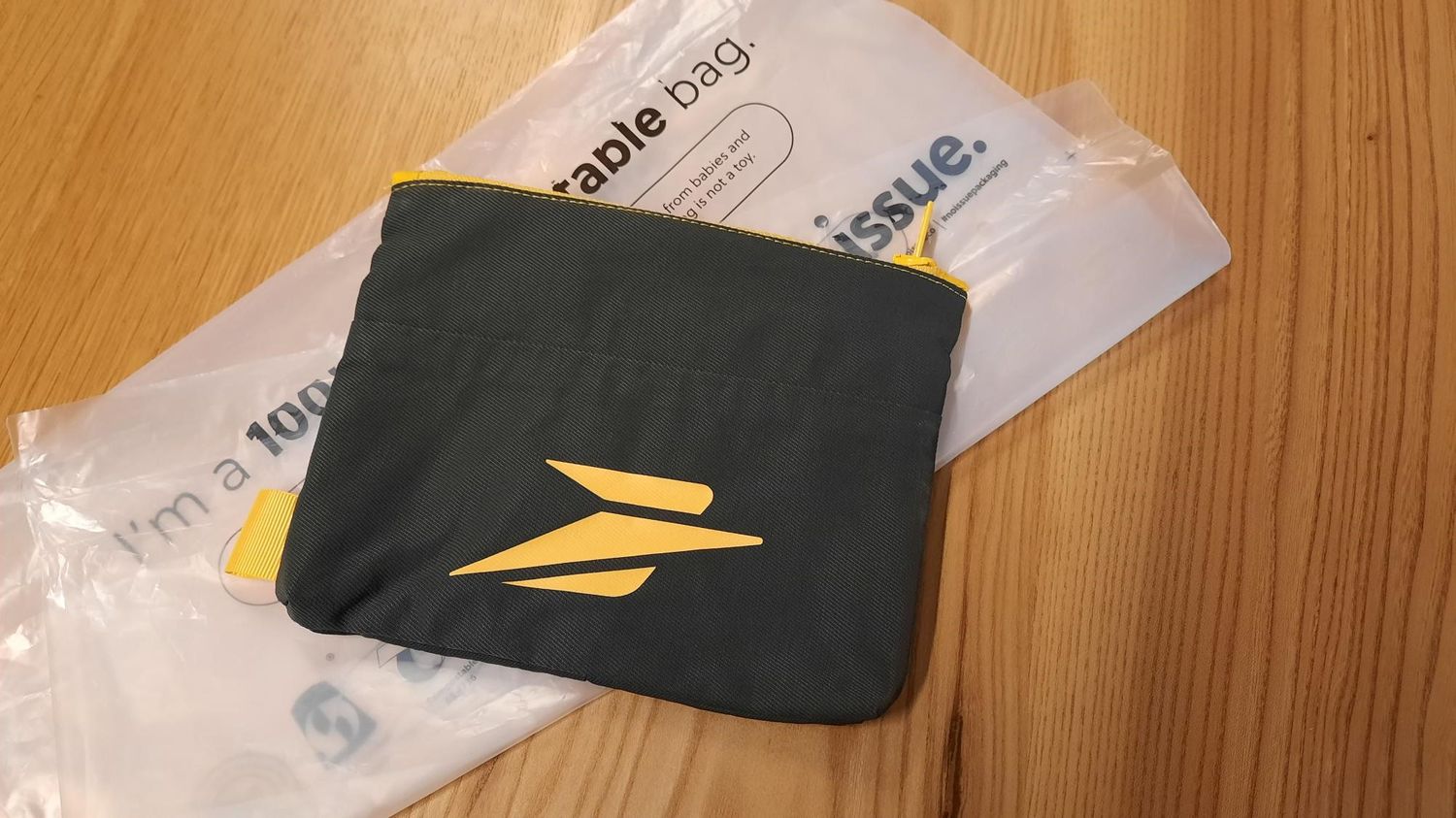Some 35,000 kits were made from postal workers’ vests. Upcycling, or surcyclage in French, allows fabric to be reused while the equivalent of a bin of clothes is thrown away every second around the world.
Published
Update
Reading time: 2 min

In every post office in France, tellers have returned their old gray vest in exchange for a black jacket. Although it is a chic transformation, it is no less polluting with four tonnes of recovered fabrics, a real headache. “We couldn’t throw these vests in the trash, underlines Valérie Chollot, one of La Poste’s CSR directors, in charge of sustainable practices. We had to do something with it. We studied various solutions such as fraying or even burning these vests.” Eventually, the vests were transformed into kits. Some 35,000 in total offered for Christmas to postal workers who wore the famous original jacket.
“The idea of transforming something that the customer service representatives wore into another useful and symbolic object really appealed to us, continues Valérie Chollot. It is also the most resource-efficient mode of production. The best solution we found is upcycling, le surcyclage in French.”
A complex process to implement
It was through upcycling that Losanje began, this brand produced unique pieces“It took a lot of time. On average one day to make a garment, recognizes Simon Peyronnaud, its co-founder. For the consumer, this posed a lot of problems when purchasing the product. For example, you can’t find your size in the color you want. Or we have the color we want, but we don’t have its size. We had to move away from this model of single pieces which, obviously, in economic terms, is absolutely not viable. I think there’s going to be a real change.”
Time is running out according to Losanje, we throw away the equivalent of a bin of clothes every second, hence the brand’s use of a truly industrial machine to combat this waste. “It is a machine which is in the process of being patented, continues Simon Peyronnaud. I won’t go into details, but basically, the idea is, for example, for jeans that will become jackets. It’s to collect these jeans and cut out the ends of the future jacket inside. It seems simple enough like that. We still met a lot of machine builders and traditional cutters. Unfortunately, the processes were not necessarily adaptable. We had to develop our own tool.” La Poste, but also Roland Garros are customers. The start-up has convinced investors who have already granted nearly 2.5 million euros.
